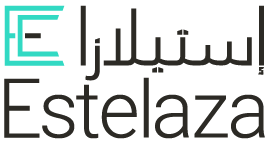What to expect
- This treatment is contraindicated in patients who are currently taking anticoagulants, have a compromised immune system, have impaired healing (e.g. keloid scarring tendency), are currently pregnant or breastfeeding, have a suspicious lesion in the treatment area and who have had any use of Isotretinoin (Accutane) in the past year.
- The administration of anesthesia by your doctor or other qualified staff might be needed during the procedure, and all anesthetics involve risks of drug reactions and complications.
- The Quanta Asset Laser is a Class IV Q-Switched Laser and you must have special laser protective eye shields covering my eyes during treatment.
- Possible complications and risks include scarring, pigment changes, infection, swelling and prolonged redness of the treated skin.
- There is no guarantee concerning the percentage of improvement of your skin and that more than one fractional laser skin resurfacing treatment may be necessary to achieve the desired results.
- you may respond very little or not at all, even if all the settings and techniques are properly applied because of the color, size, depth, hormonal conditions or medical issues. Additional maintenance treatments may be needed after all scheduled treatments are completed.
Post-Treatment Instructions
- Immediately after treatment, there may be “frosting” on the area that is treated. Redness and swelling are typical. Pinpoint bleeding may also occur.
- A cool compress may be applied and Paracetamol is recommended for discomfort.
- The treated area should be cared for delicately until healing is complete and care should be taken to avoid trauma to the area for the first 7 days after treatment.
- Clean treated area daily allowing water or shower to run over the wound, and then pat the area dry.
- Apply prescribed ointment to wound area 2-3 times a day. Keep the area moist, and let the scab fall off on its own.
- Do NOT pick, peel, rub, scrub, or scratch at the skin in the treatment area throughout the healing process. If crusting occurs, do not shave or pick the area.
- Although blisters and scabs can be a normal response to tattoo removal, most patients will not experience them.
- In the case that you do, it is important to not pop or pick at them. If the blister pops on its own, keep the skin over it covered with a healing ointment and gauze to promote healing and prevent scarring.
- No swimming or using hot tubs/whirlpools until the wound heals.
- Physical exercise that causes perspiration should be discontinued for at least 2-7 days after treatment as excessive perspiration may disrupt the healing process.
Avoid sun exposure. When the treatment area is exposed to the sun use a thick layer of SPF 30+ sunblock with zinc oxide and reapply every 2 hours.

